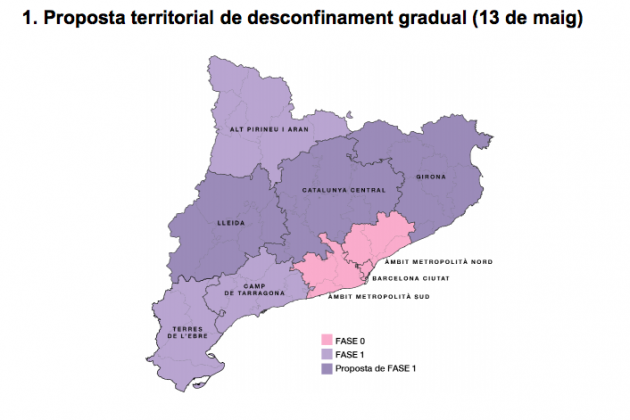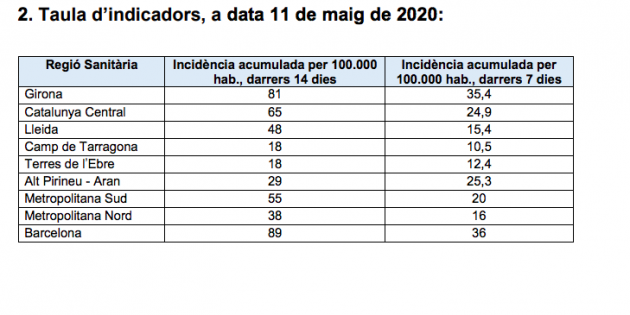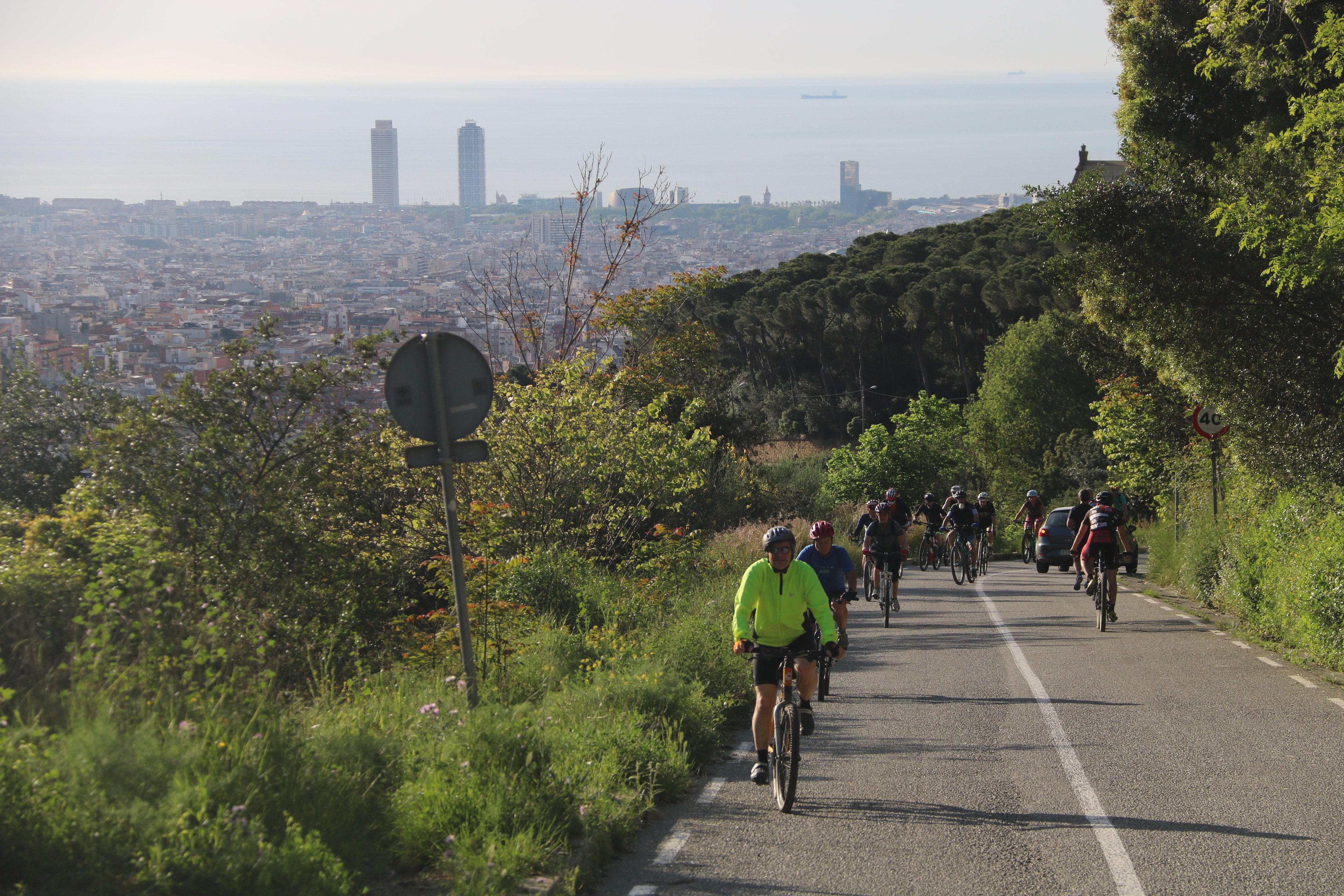The whole of Barcelona and its metropolitan region - that is, the three health regions stretching from Vilafranca del Penedès in the south to past Mataró in the north, and inland to the mountain of Montserrat - are to remain in phase zero of Spain's coronavirus deescalation process, according to the proposal that the Catalan government has sent to the Spanish health ministry, in which it also proposes that all the rest of Catalonia will be in phase 1 by next week, with the health areas of Girona, Lleida and Catalunya Central likely to make the change on Monday 18th May.
If approved, these three regions will join the territories of Alt Pirineu-Aran, Camp de Tarragona and Terres de l'Ebre, which already moved to phase 1 of the four-phase plan this Monday, 11th May.

Catalan government's territorial proposal for gradual deconfinement (May13th)
The Catalan minister of health, Alba Vergés, announced at a press conference this Wednesday that Catalonia's Procicat civil emergency committee has decided to send this proposal to the ministry in Madrid. However, she also said that the Catalan administration is working with the territories of Barcelona city and the two metropolitan area health regions - north and south - on a proposal to allow them to make progress “prudently” towards an eased lockdown next week.
Vergés did not want to specify whether the intention with this new proposal, being studied for Barcelona and its metropolitan area for next week, is to make some advances in the calendar of the process or in terms of the content of each phase. "Let's allow the technical proposals to be put together," she replied.
The minister argued the need to maintain caution with regard to Barcelona and its metropolitan region due to the high population density of these territories, which hold 66% of the Catalan population, and have a very high volume of mobility; she asked the public to be patient and assured that in "a matter of days" there would be some forward movement. She described how the proposals were attempting to take into account the "different realities" of life in the different parts of metropolitan Barcelona - from the 1.6 million people in high-density Barcelona city, to the situations of the metropolitan area, which range from equally high-density areas to more spread-out suburban areas and rural zones.
Low or moderate risk of resurgence
Quim Torra's health minister also said that the indicators used by her department showed all of Catalonia's territories as having low or moderate risk of resurgence of the virus. Barcelona city, which last week had a moderate-high risk, is now moderate. The two metropolitan zones, north and south, have fallen from moderate to low, as have Lleida and Central Catalonia.
On the other hand, Terres de l’Ebre has gone from low to moderate, but with respect to this, Alba Vergés noted that the low population density of this southern Catalonia heath area causes any change to have a greater impact on the figures.

As was the case last week, the decision to move the regions of Lleida, Girona and Central Catalonia to phase 1 is partially based on data on the cumulative incidence of the viral disease among 100,000 inhabitants in the last 14 and 7 days. In the case of Lleida these figures are 48 cases per 10,000 people in the last 2 weeks, and 15.4 cases in the last week; in Central Catalonia, they are 65 and 24.9, and in Girona, 83 and 35.4 respectively.
The department does not rule out that PCR tests carried out in residences may have affected this data, but says trends are falling in all areas.
To find out which Catalan health region a municipality belongs to, and which phase of the process it is in, the Catalan health service website provides this page.
MAP | Coronavirus infections in Catalonia by municipalities and neighborhoods
GRAPHS & DATA | Latest coronavirus statistics for Catalonia and Spain

